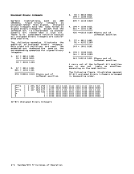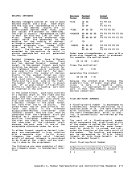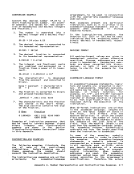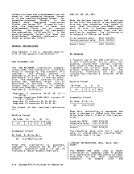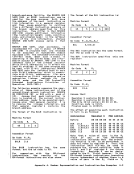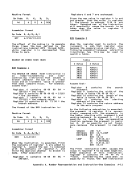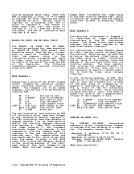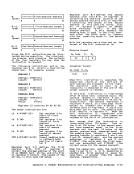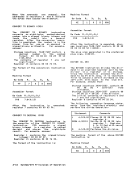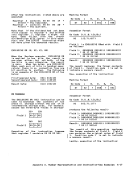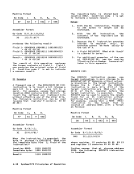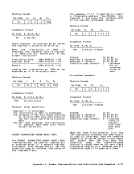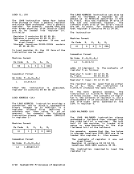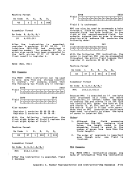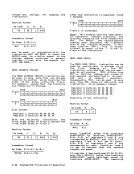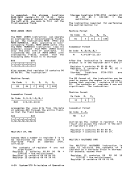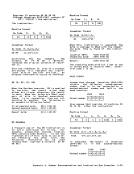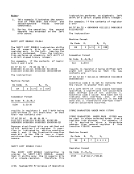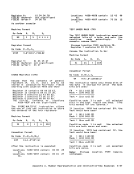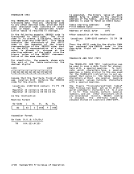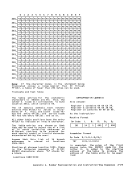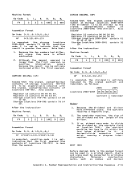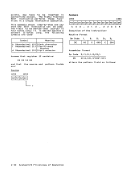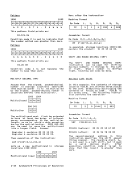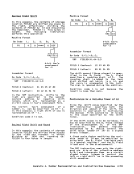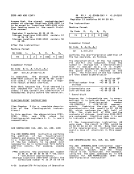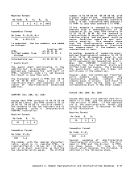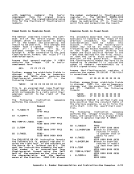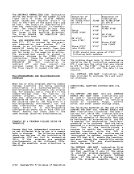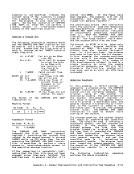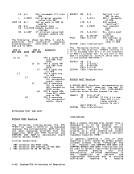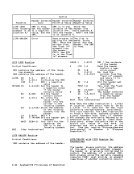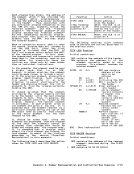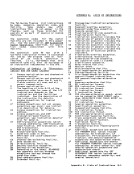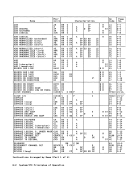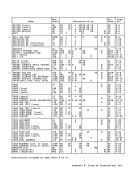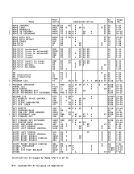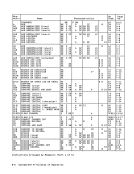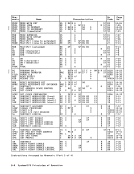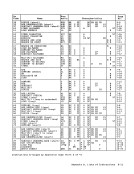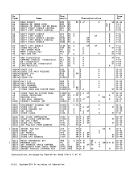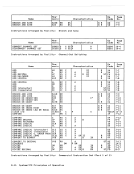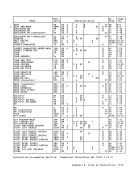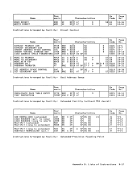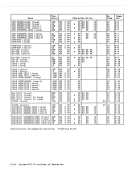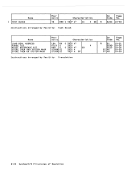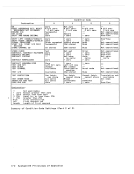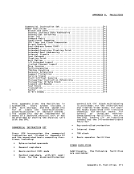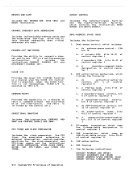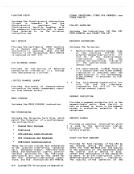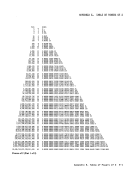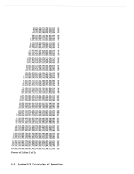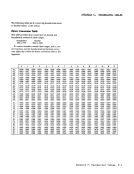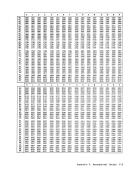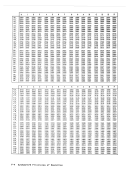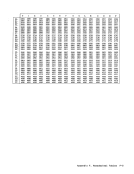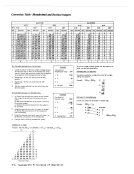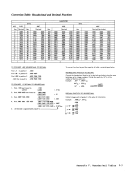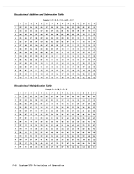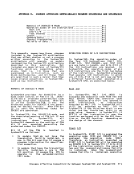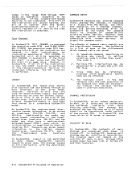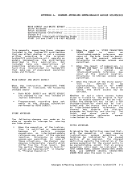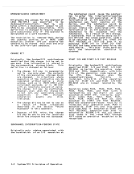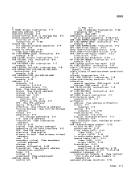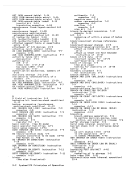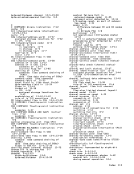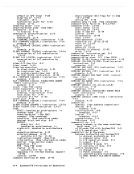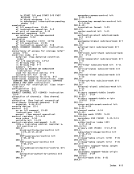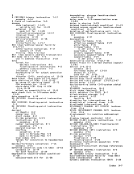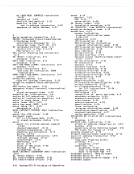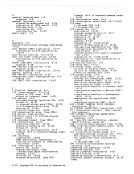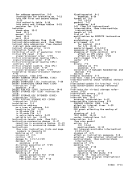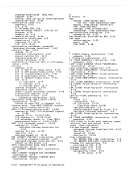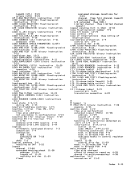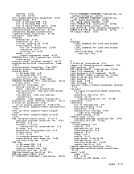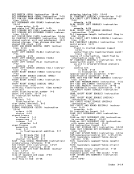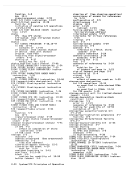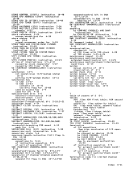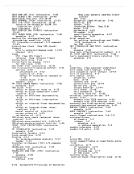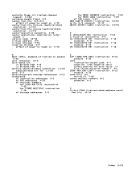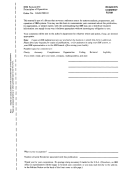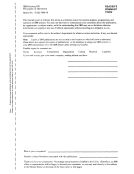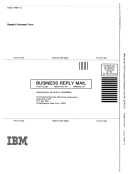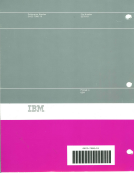Control-unit
control units
control units
channels, and
the following
end is provided only by
shared byI/O devices or
accessible by two or more
only when one or both of
have occurred:
1. The program had previously caused
the control unit to be interrogated
while the control unit wasin the
busy state. The control unit is
considered to have been interro
gatedin the busy state when a
command or the instructions STARTI/O, START I/O FAST RELEASE (when
not executed independent of the
device), TESTI/O, HALT I/O, or
HALTDEVICE had been issued to a
device on the control unit, and the
control unit had responded with
busy and status modifier in the
unit-status byte. (See the section
"Status Modifier" earlierin this
chapter.)
2. The control unit detected an unusu
al condition during the portion of
the operation after channel end had
been signaled to the channel. The
indication of the unusual situation
accompanies control-unit end.
If the control unit remains busy with
the execution of an operation after
signaling channel end but has not
detected any unusual situations and has
not been interrogated by the program,
control-unit end is not generated.
Similarly, control-unit end is not
provided when the control unit has been
interrogated and could perform the indi
cated function. The latter case is
indicated by the absence of busy and
status modifier in the response to the
instruction causing the interrogation.
When the busy state of the control unit
is temporary, control-unit end is
included with busy and status modifier
in response to the interrogation even
though the control unit has notyet been
freed.The busy condition is considered
to be temporary if its duration is
commensurate with the program time
required to handle anI/O interruption.
The IBM3705 Communications Controller is an example of a device in which the
control unit may be busy temporarily and
which includes control-unit end with
busy and status modifier.
Control-unit end can be signaled with
channel end, with device end, or between
the two. Control-unit end may be
signaled at other times and may be
accompanied by other status bits. When
control-unit end is signaled by means of
anI/O interruption in the absence of
any other status, the interruption may
be identified by any device address
assigned to the control unit which is
associated with a devicein the avail
able state, even if the device is not
ready or absent. A control-unit end may
cause the control unit to appear busy
for the initiation of new operations
with any attached device.
Alternatively, a control-unit end may be
assigned by the control unit to a
specific device address, and only that
device would appear busy for the initi
ation of new operations.
When control-unit end is signaled to the
channel in the absence of any other
status to indicate that the control-unit
busy period previously indicated to the
program is ended, and the control unit
is available, the control-unit-end
status normally causes the channel to
recognize an interruption condition to
present the control-unitend to the
program. However, when start-I/O-fast
queuing or the suspend-and-resume facil
ity is provided and the device address
with which the control unit signals the
control-unit end is associated witha working subchannel that has a pending I/O operation or has a suspended
channel-program execution, the channel
recognizes the channel-available
interruption(CAl) condition instead.
The control-unit-end status is discarded
by the channel and the state of the
associated subchannel remains unchanged
in this case. (See the section
"Channel-Available Interruption," earli
erin this chapter.)
Busy indicates that theI/O device or
control unit cannot execute the command
or instruction because (1) it is execut
ing a previously initiated operation,
(2) it contains an interruption condi
tion, (3)it is shared by channels or I/O devices and the shared facility is
not available, or (4) a self-initiated
function is being performed. The status
associated with the interruption condi
tion for the addressed device, if any,
accompanies the busy status. If busy
applies to the control unit, busy is
accompanied by status modifier.
The figure "Indications of Busy inCSW" lists the situations for devices
connected to only one channel when the
busy bit is set to one in theCSW and
indicates when busy is accompanied by
status modifier. For devices shared by
more than one channel, operations
related to one channel may cause the
control unit or device to appear busy to
the other channels.Chapter 13. Input/Output Operations 13-65
control units
control units
channels, and
the following
end is provided only by
shared by
accessible by two or more
only when one or both of
have occurred:
1. The program had previously caused
the control unit to be interrogated
while the control unit was
busy state. The control unit is
considered to have been interro
gated
command or the instructions START
not executed independent of the
device), TEST
HALT
device on the control unit, and the
control unit had responded with
busy and status modifier in the
unit-status byte. (See the section
"Status Modifier" earlier
chapter.)
2. The control unit detected an unusu
al condition during the portion of
the operation after channel end had
been signaled to the channel. The
indication of the unusual situation
accompanies control-unit end.
If the control unit remains busy with
the execution of an operation after
signaling channel end but has not
detected any unusual situations and has
not been interrogated by the program,
control-unit end is not generated.
Similarly, control-unit end is not
provided when the control unit has been
interrogated and could perform the indi
cated function. The latter case is
indicated by the absence of busy and
status modifier in the response to the
instruction causing the interrogation.
When the busy state of the control unit
is temporary, control-unit end is
included with busy and status modifier
in response to the interrogation even
though the control unit has not
freed.
to be temporary if its duration is
commensurate with the program time
required to handle an
The IBM
control unit may be busy temporarily and
which includes control-unit end with
busy and status modifier.
Control-unit end can be signaled with
channel end, with device end, or between
the two. Control-unit end may be
signaled at other times and may be
accompanied by other status bits. When
control-unit end is signaled by means of
an
any other status, the interruption may
be identified by any device address
assigned to the control unit which is
associated with a device
able state, even if the device is not
ready or absent. A control-unit end may
cause the control unit to appear busy
for the initiation of new operations
with any attached device.
Alternatively, a control-unit end may be
assigned by the control unit to a
specific device address, and only that
device would appear busy for the initi
ation of new operations.
When control-unit end is signaled to the
channel in the absence of any other
status to indicate that the control-unit
busy period previously indicated to the
program is ended, and the control unit
is available, the control-unit-end
status normally causes the channel to
recognize an interruption condition to
present the control-unit
program. However, when start-I/O-fast
queuing or the suspend-and-resume facil
ity is provided and the device address
with which the control unit signals the
control-unit end is associated with
channel-program execution, the channel
recognizes the channel-available
interruption
The control-unit-end status is discarded
by the channel and the state of the
associated subchannel remains unchanged
in this case. (See the section
"Channel-Available Interruption," earli
er
Busy indicates that the
control unit cannot execute the command
or instruction because (1) it is execut
ing a previously initiated operation,
(2) it contains an interruption condi
tion, (3)
not available, or (4) a self-initiated
function is being performed. The status
associated with the interruption condi
tion for the addressed device, if any,
accompanies the busy status. If busy
applies to the control unit, busy is
accompanied by status modifier.
The figure "Indications of Busy in
connected to only one channel when the
busy bit is set to one in the
indicates when busy is accompanied by
status modifier. For devices shared by
more than one channel, operations
related to one channel may cause the
control unit or device to appear busy to
the other channels.
























































































































































































































































































































































































































































